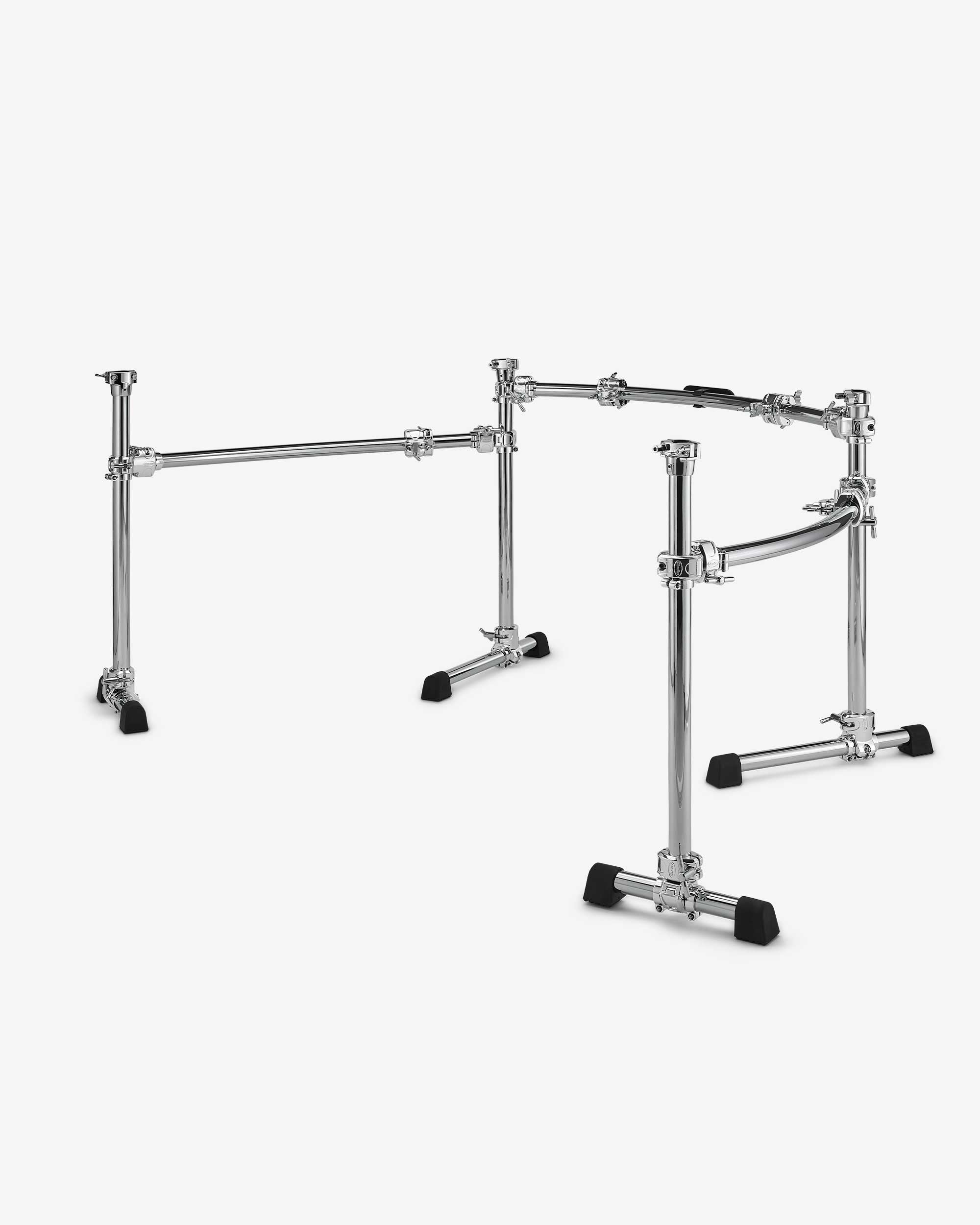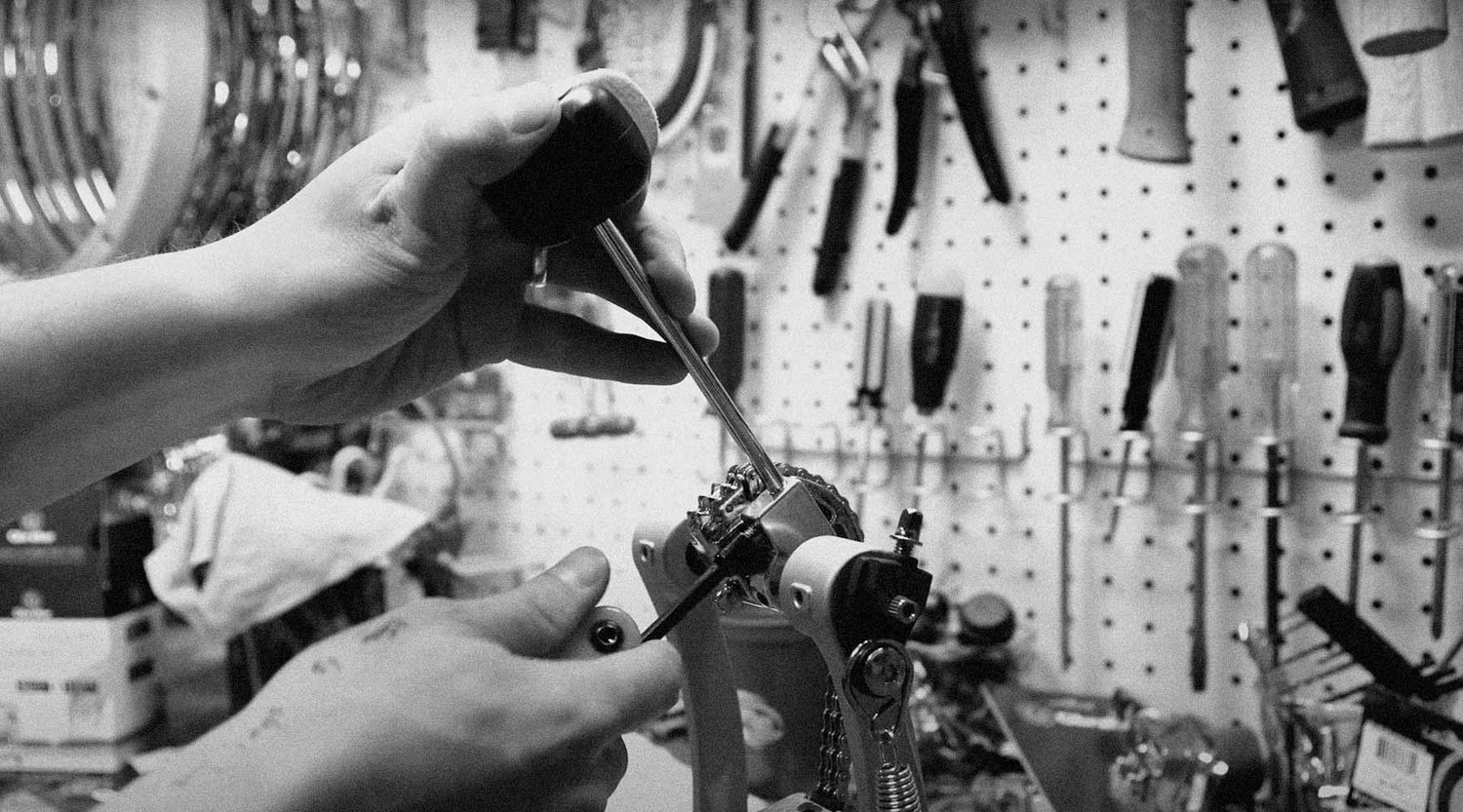Introduction to Pedal Maintenance
Maintenance: “The act of keeping property or equipment in good condition by making repairs, correcting problems, etc.” We all love when our equipment plays and feels great to work with. All is right in our world, until it JUST. ISN’T. RIGHT. It can be a terrible feeling when you don’t have a plan to make it right again, or a clue how to do so. What you need is a procedure that takes care of all the components of the gear you’re working with, and an easy process of elimination of the problem. Here’s a great starting point for maintenance of your bass drum pedals.
The Importance of Pedal Care
For such an important piece of gear, bass drum pedals are sometimes overlooked and neglected when it comes to keeping them working their best. Constantly being stepped on or kicked, and often with shoes that just literally walked off the street, through who knows what… And you think your job is rough! Let’s take a look at how we can make our pedal’s life a little better, and in turn make our experience playing them better.
Starting with a Clean Workspace
First up, a good idea for any maintenance is to start with a clean work surface, like a workbench, so repairs can be done without clutter and tools can be easily accessed. With the pedal off of the drum and on the workbench, move the pedal board up and down, listening for any squeaks or rubbing of any parts. Try to find the source of friction, and either lubricate the part, or if the part is worn, replace it with a new part. Worn parts lead to breakage, which is the last thing anyone needs to experience on a rehearsal or gig.
Ensuring a Secure Connection
A confident grip of the pedal to the bass drum hoop is a must, so check that the wing screw that moves the “toe clamp” tightens and loosens. This part is prone to get dirty, since it sits below our feet as we play, and may catch stick dust that falls from above. Make sure the threads on the screw are clean and move easily.
Stabilizing the Bass Drum
For extra insurance that your bass drum won’t slide away during performance, some pedals feature spurs on both sides of the pedal. These are best set after you attach the pedal to the drum. After the pedal is attached, turn the spur until you feel it make contact with the surface you have the drum set on. Not only will it grip the rug, but it will also balance the pedal and help keep it flat on the ground. A pedal that isn’t flat on the surface that it’s set on is inefficient in movement, and can be a source of noise and result in a feel that is sometimes difficult to play.
Beater and Stroke Adjustments
Check to see that the bass drum beater is secure before you play, and that it is hitting in the right place on the drum head for your personal preference. Some drummers prefer to hit the center of the head, and others may feel that the stroke needs to be longer or shorter for their style. This is similar to the way we hold a drumstick, so experiment with the length of the stroke to find the optimum placement.
Monitoring Tension Spring Health
The tension spring is possibly the most vital part of your pedal’s feel and performance. Inspect it periodically and replace it if it's worn. As it gets stretched out over time, its response will diminish and the feel you’ve grown to depend on will change.
Regular Upkeep for Longevity
Looking after your pedals from time to time will increase their dependability and prolong their life under your feet. Periodically wipe down the pedal board and hinge to keep grime from accumulating. When transporting them, try to use either a pedal bag or case so other pieces of gear can’t damage the pedal board or chain.







